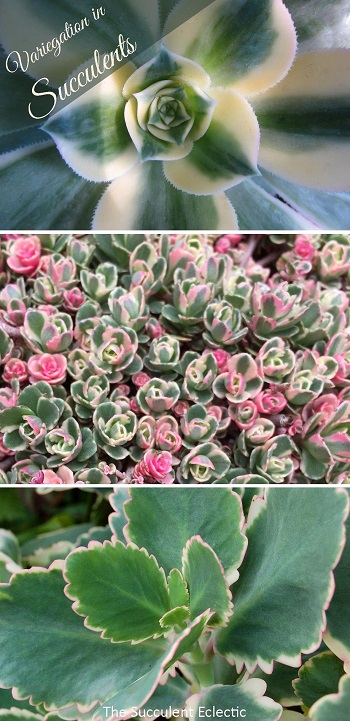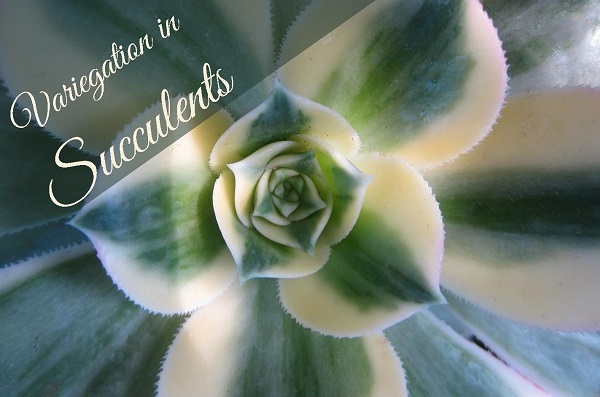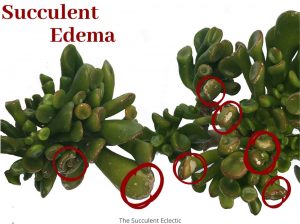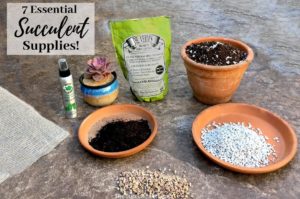Nearly all gardeners and succulent enthusiasts love variegated plants. The variety of colors within their foliage lends interest to the garden or planter all the time without relying on short-lived blooms for added color. Some are subtle in their hues, while others make a bold, look-at-me statement. A short while ago, you could expect to pay premium prices for any spotted or striped succulent. Now, they are more widely available, but some rare varieties still fetch a high price with collectors. Let’s take a closer look at succulents with a variegated leaf. Why does variegation occur, how to care for variegated succulents, and how to encourage the varied coloring to continue.
Care for Variegated Leaf Succulents
In this Post We'll Cover:
{Please note, some links in this post may be affiliate links to sites that pay me a small commission if you click on the link and make a purchase. This commission is at absolutely no cost to you. I only recommend products and companies that I have worked with and truly love! ~Kat}
What are Veriegated Succulents?
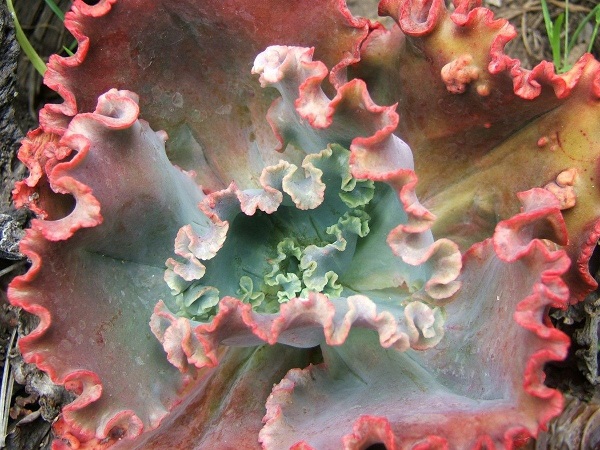
Typically, when we imagine a variegated succulent, we think of striped foliage. But variegation comes in many forms, including stripes, spots, spatters, blotches, shadings and more. Any plant whose leaves, stems, flowers or trunk exhibits multiple colors within the same structure is considered variegated. Variegation occurs in a wide variety of plants from small grasses to mighty trees. This Echeveria ‘Crinoline Ruffles’ demonstrates a lovely shading of several colors within each leaf. The different colors become more pronounced with age and sun exposure, but they are a permanent part of the plant. Note how there is no clear line or marking for each hue. They shade and flow into the other colors like in a sunset.
Forms of Variegation in Succulents
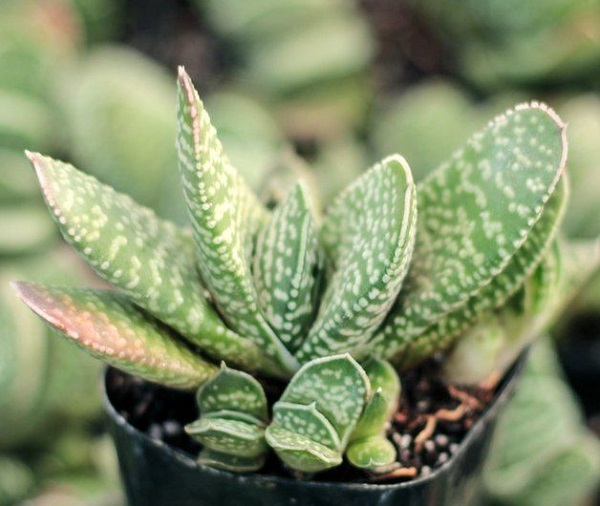
A variegated leaf is the result of an uneven distribution of chlorophyll and other pigments. Where leaves display different shades of green, there is more chlorophyll in the darker green portions, less in the location of lighter shades. When you see white or yellow stripes, margins or spots within the leaf flesh, the chlorophyll-producing cells are not present in the lighter portions on the leaf. This is considered an absence of color. Chlorophyll is green, so places without it appear colorless (or nearly so). It is also the substance responsible for photosynthesisPhotosynthesis (FO-to-SIN-thuh-sis) is the process plants us... More. The white portions of the leaf cannot produce nourishment for the plant. They are also more vulnerable to sunburn without the chlorophyll’s protection.
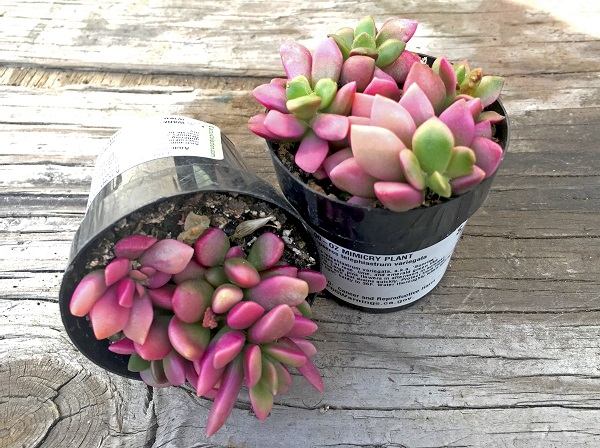
When you see additional colors in the leaf — for instance, shades of blue, pink, purple, red or orange — this is due to the presence of additional pigments, like anthocyaninAnthocyanin (An-tho-SY-an-in) is a blue, red or violet pigme... and carotenoidCarotenoid (Kair-AH-ten-oid) is a yellow, red or orange fat-.... These antioxidant pigments provide protection for the plant from UV rays and other forms of plant stress. Where you see these colors, the pigment is in the presence of chlorophyll but overshadows the color green. So these parts of the leaf do photosynthesize and are unlikely to burn.
Anacampseros
What Causes Variegation ?
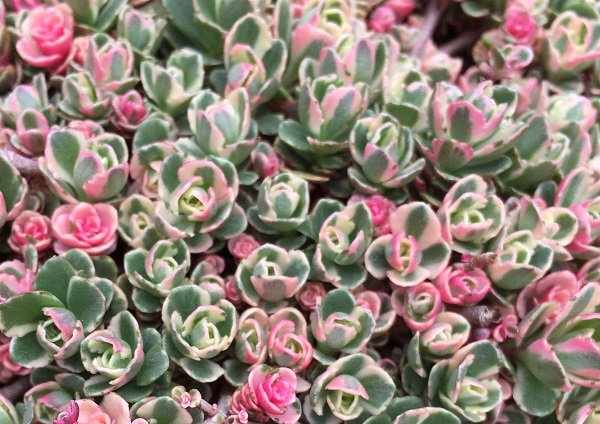
Variegated succulents, or any plants with a variegated leaf, can occur in a few different ways. Most variegation is the result of a genetic mutation. It is not an adaptation to the plant’s environment, but rather a genetic accident. Some of these mutated plants will pass on this colorful change to their offspring. These are genetic variegations, and the offspring will inherit the parent’s coloring whether they result from seeds or cuttings. Many will not pass the variegation to their offspring genetically. These are considered “chimeras” — having two different types of chromosomes. In this case, the only way to maintain the variegation in the offspring is through stem cuttings or leaf propagation from a variegated leaf.
When variegation mutation occurs in the wild, often the different coloration will not survive. Either it cannot produce sufficient chlorophyll to support itself, or a solid green portion of the plant will outperform the sections with variegation. In cultivation, however, growers will select a variegated plant for special care and breeding. While some variegated succulents do require special care, many are sufficiently pampered just by virtue of being in your garden.
Another cause of colorful variegation can be a deadly virus. Hybridizers have worked extensively to isolate some viruses, like the canna mosaic virus, in order to develop stable variegates for sale.
Reflective Variegation
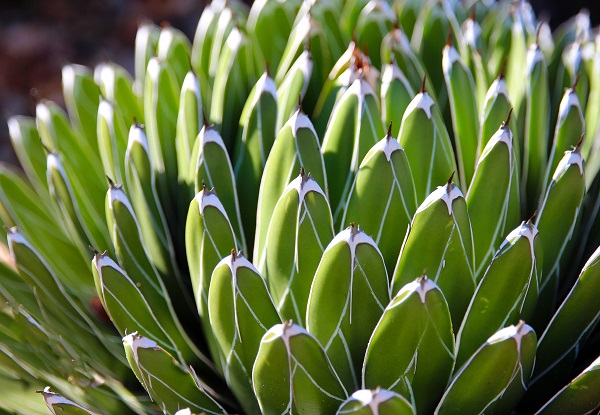
Another form of variegation occurs when the color change is not due to different pigments within the flesh of the leaf, but due to the greater reflection of light from parts of the leaf. These reflective variegates may have air pockets or “leaf windows” just under the surface of the leaf, giving a silvery look to the foliage. Or, fine white or silver hairs or markings that form on top of the leaf surface will give it a multi-colored look. The extraordinary Agave
Possible Defensive Value to Variegation?
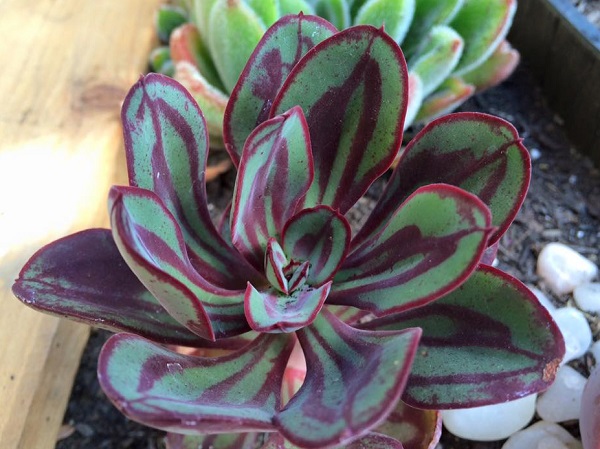
Some scientists suggest that the intricate tracings of some variegated succulents may be a defensive adaptation. It is considered possible that these tracings look like the work of leaf miners, or similarly damaging pests, and thereby convince the territorial insects to leave these plants alone. It is certainly possible. Certainly more scientific than the thought this extraordinary Echeveria nodulosa is just showing off. You can see why some might think so, as well as why it has the common name “painted echeveria”.
My thanks to Sue Morton for sharing this photo! Check out Sue’s beautiful succulent arrangements on her Facebook page, Succulents by Sue.
Caring for Variegated Succulents
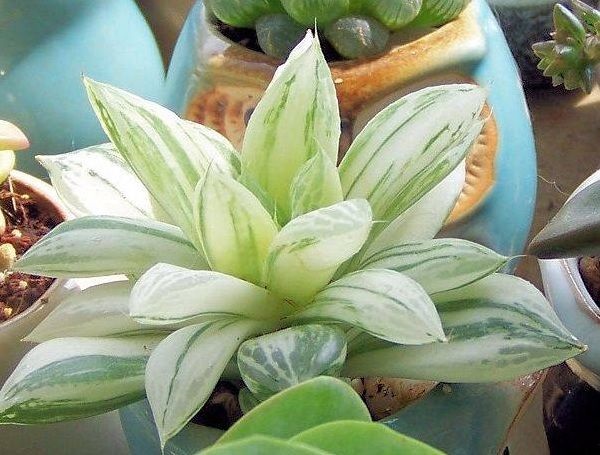
You might think a variegated-leaf plant would need more sunshine, to make up for its lack of chlorophyll. Actually, because chlorophyll also protects the leaf from sunburn, most variegated succulents need a bit more protection from direct sun. However, their lower production of photosynthesizing chlorophyll tends to make them less tolerant of shade than their greener siblings. Provide bright, indirect light during the hottest part of the day and year for your yellow and white variegated plants. This extraordinary variegated Haworthia
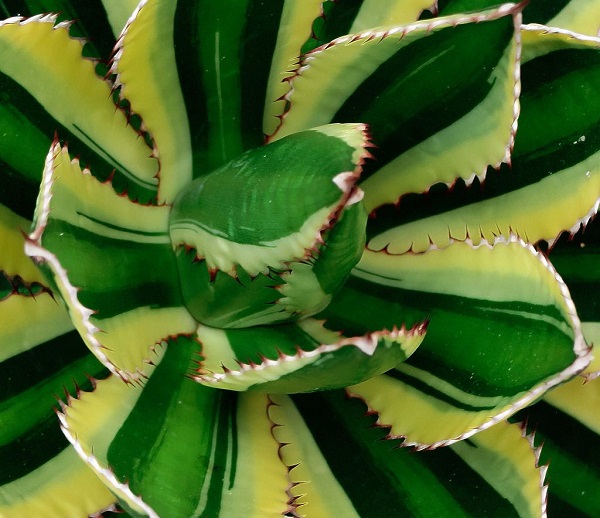
(CC BY 4.0)
Variegated succulents that result from the absence of chlorophyll are also a bit more sensitive to extremes of heat and cold
The spectacular variegated Agave
Growing Variegated Succulents
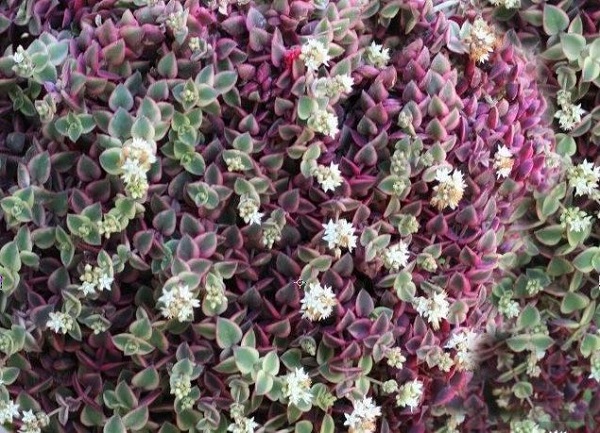
Genetically stable variegated succulents grow well and breed true from seeds, division, cuttings or leaf propagation (so long as the plant can be propagated by each means). Variegated plants tend to grow slower, with a smaller mature size than their solid color siblings. Take this into account when selecting plants for your landscape or containers.
Encouraging Variegation in Succulents
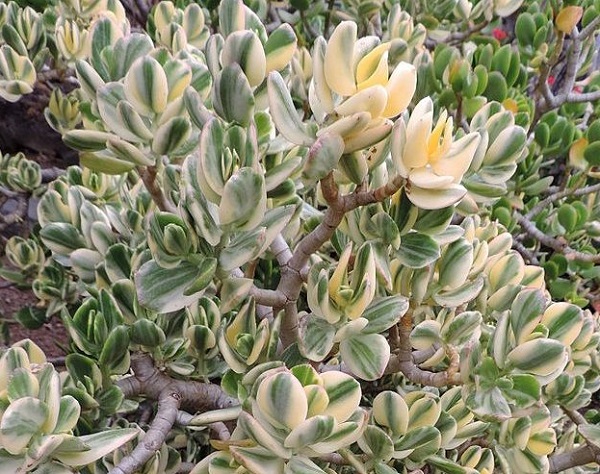
Some variegated plants are highly disciplined in their variegation patterns. Like the Queen Victoria Agave up above, they do not deviate from a distinctive pattern. In most plants, however. the variegated leaf may vary a great deal from one twig or branch to the next, as seen here on this Crassula ovata ‘Tricolor’. Often, a branch or a pup from a variegated succulent will “revert” or lose its variegation. You would see solid green leaves developing on a variegated plant. If the green branches or pupsSucculent pups are the baby succulents that form at the base... are allowed to remain intact, in time they will outperform the variegated mother plant and can turn the entire plant green.
Should your variegated succulent show signs of reverting, you can take steps to keep it colorful. Prune out any solid colored growth. Cut back the branch to a variegated side branch. Remove any solid colored pups. Pamper the plant a bit more. If it was growing in full sun, or a lot of shade or the temps were particularly high or
Conversely, a solid colored succulent may suddenly show signs of variegation. As reviewed above, this could be signs of trouble — insect damage or a virus. Look closely for signs of pests and the plant’s overall health. If you rule out pathology, andf your solid color succulent shows a leaf, branch or pup with variegated coloring you like — by all means, propagate it! Take a stem cutting and give it extra care. Once it is rooted, give it bright, indirect light, and pay attention to any signs of stress.
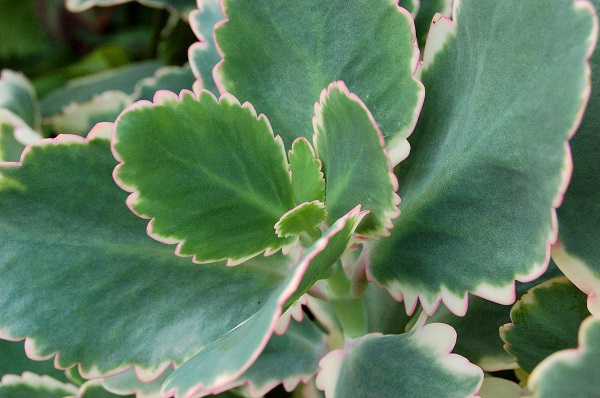
I hope you’ve enjoyed this closer look at variegated succulents. They are a particular favorite of mine. Don’t be afraid to grow them! Tend them a bit more carefully than other varieties, but generally, there is no need to baby them. If you have any questions or comments — just leave a comment on this post. I love hearing from you, and I will get right back to you!
Because life is just better with succulents!
P.S. For more succulent info — and to absolutely make my day! — please subscribe to The Succulent Eclectic! I’ll send you my FREE course, 7 Steps to Succulent Success. Thanks!
P.P.S. Why not join my Facebook Group for succulent lovers? We talk about succulent care, propagation, succulent identification, and design. It’s a warm and welcoming group that would love to meet you!
